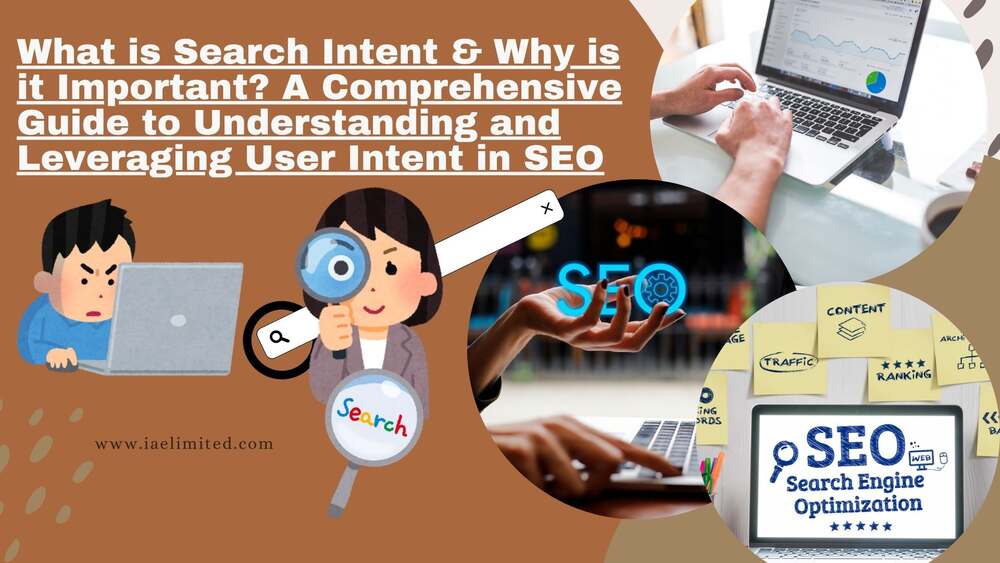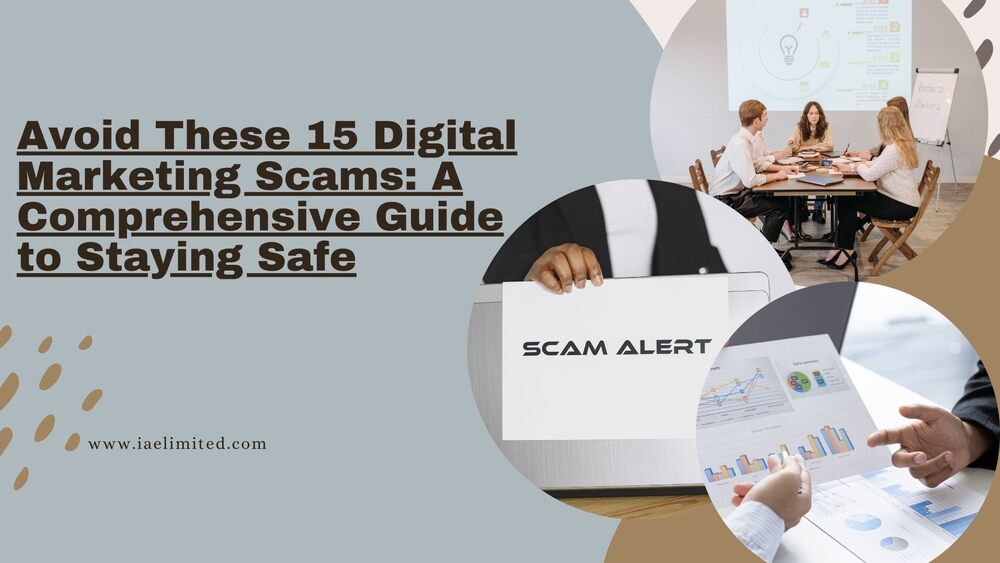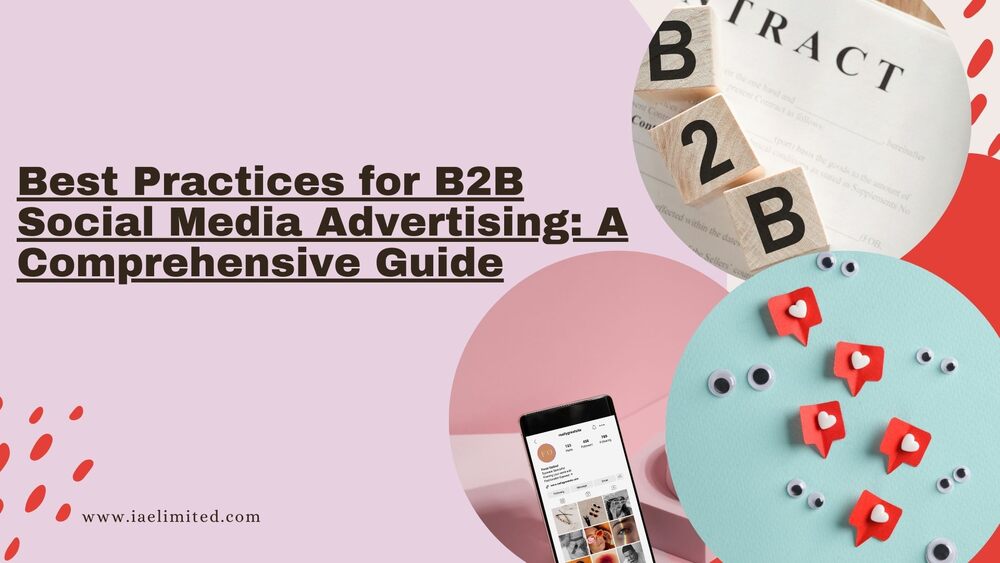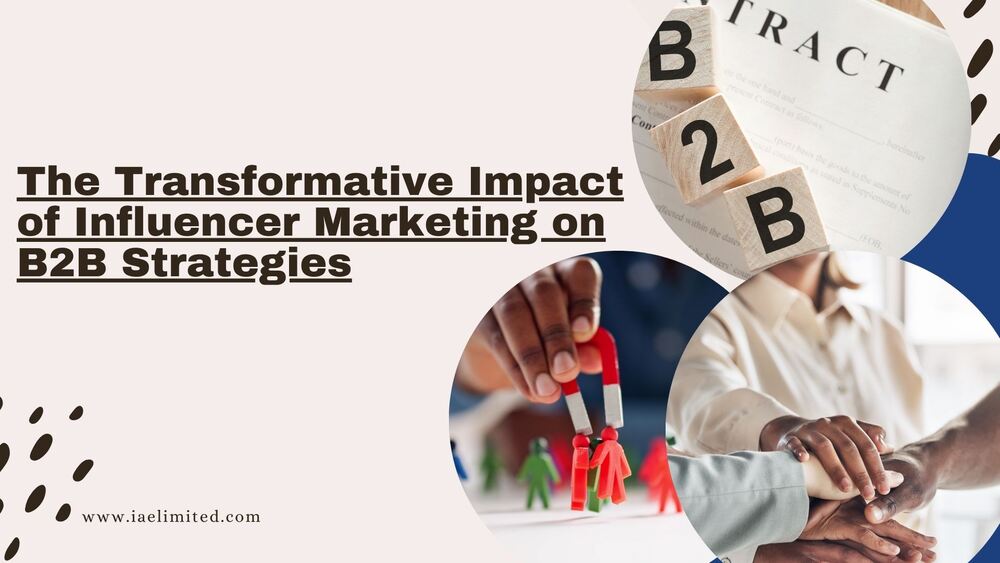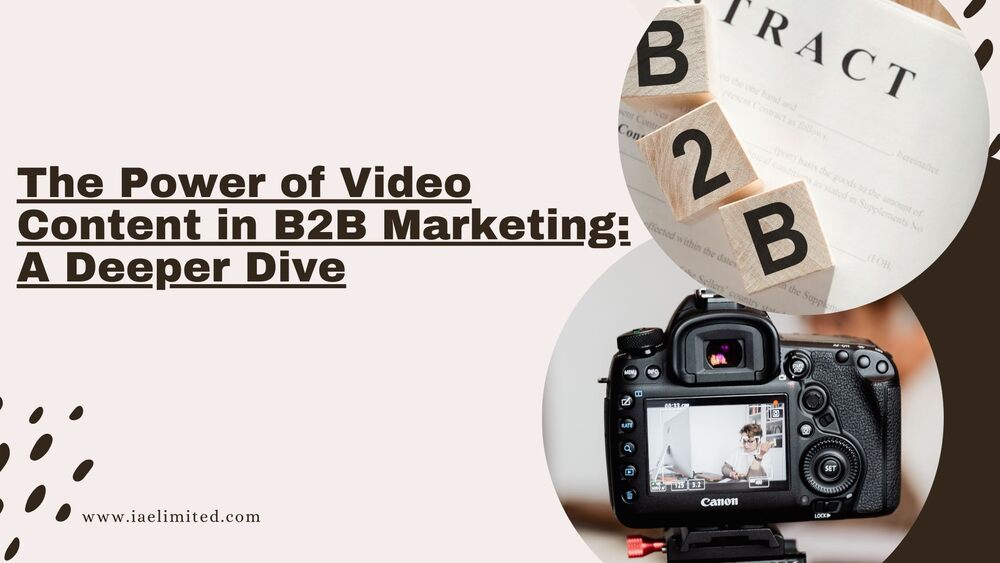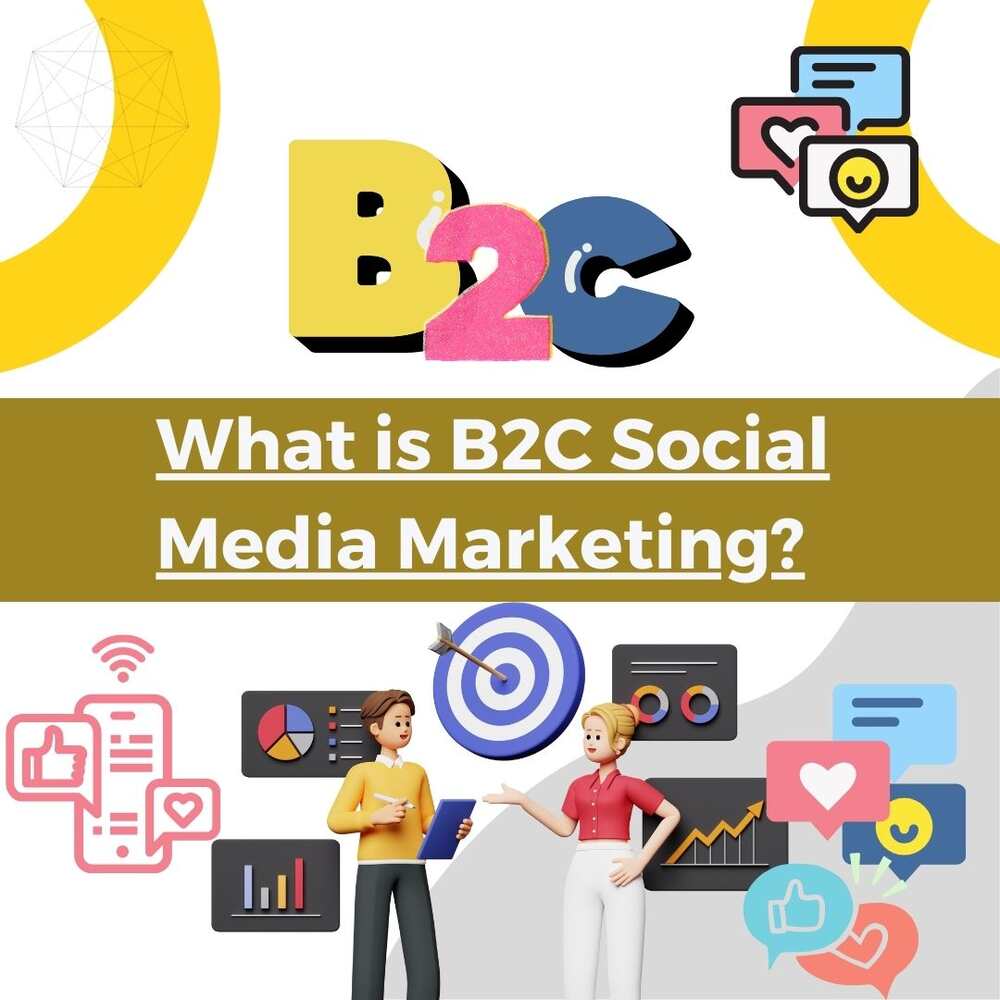
In today’s digital world, businesses are constantly seeking ways to connect with consumers on a personal level. B2C (Business-to-Consumer) social media marketing is one of the most effective methods to achieve this.
Unlike B2B marketing, which focuses on building relationships with other businesses, B2C marketing aims directly at the end consumer. This article will delve into what B2C social media marketing entails, why it’s crucial, and how to execute it effectively across various platforms.
Introduction to B2C Social Media Marketing
Table of Contents
Definition of B2C Social Media Marketing
B2C social media marketing involves using social media platforms to market products or services directly to consumers, just like the one we explained in our recent article on, the importance of social media in b2b marketing.
The goal is to engage with potential customers, build brand awareness, and ultimately drive sales. This marketing strategy leverages the personal nature of social media to create meaningful connections between a brand and its audience.
Importance of Social Media in B2C Marketing
Social media has revolutionized the way businesses interact with consumers. With billions of active users worldwide, platforms like Facebook, Instagram, and Twitter offer unparalleled opportunities for businesses to reach their target audience.
For B2C companies, social media is not just a tool but a necessity. It allows brands to meet consumers where they are, offering personalized content, instant customer service, and a community-like atmosphere.
How B2C Social Media Marketing Differs from B2B Marketing
The primary difference between B2C and B2B marketing lies in the target audience. B2C marketing focuses on individual consumers, often emphasizing emotional appeal, storytelling, and immediate benefits. In contrast, B2B marketing targets businesses, focusing on logical decision-making, long-term benefits, and ROI. The content, tone, and strategies used in B2C marketing are generally more casual, entertaining, and visually appealing.
Key Platforms for B2C Social Media Marketing
Facebook: Reaching a Broad Audience
Facebook remains a powerhouse in social media marketing, particularly for B2C companies. With its vast user base and sophisticated targeting options, Facebook allows brands to reach a diverse audience.
Demographics and User Behavior on Facebook
Understanding the demographics and behavior of Facebook users is essential for effective marketing. The platform is popular among all age groups, but it has a strong presence among adults aged 25-34. Users typically engage with content through likes, shares, and comments, making it an ideal platform for interactive content.
Best Practices for Facebook B2C Marketing
To succeed on Facebook, brands should focus on creating engaging posts that encourage interaction. This includes using high-quality visuals, asking questions, and hosting giveaways. Additionally, using Facebook Ads can help target specific audiences based on demographics, interests, and behavior.
Instagram: Visual Storytelling and Engagement
Instagram is a visually driven platform that allows brands to tell their stories through images and videos. It’s particularly effective for brands with strong visual content, such as fashion, food, and lifestyle.
Importance of Visual Content on Instagram
Visual content is king on Instagram. High-quality photos, videos, and graphics can capture the attention of users and convey a brand’s message quickly and effectively. Instagram’s algorithm favors engaging content, so brands should focus on creating visually appealing posts that resonate with their audience.
Utilizing Instagram Stories and Reels
Instagram Stories and Reels offer additional opportunities for engagement. Stories are temporary posts that appear at the top of the feed, while Reels are short, entertaining videos. Both formats are perfect for sharing behind-the-scenes content, product launches, and user-generated content.
Twitter: Real-Time Marketing and Customer Interaction
Twitter is known for its real-time nature, making it an excellent platform for timely updates and customer interactions.
Effective Use of Hashtags and Trends
Hashtags are crucial on Twitter, helping to categorize content and make it discoverable. Brands can participate in trending hashtags to join larger conversations and increase visibility. It’s also important to create branded hashtags for specific campaigns.
Engaging with Followers through Twitter Chats
Twitter Chats are a great way to engage with followers and build a community. By hosting or participating in these chats, brands can discuss relevant topics, answer questions, and connect with their audience on a deeper level.
Pinterest: Driving Traffic and Sales
Pinterest is a unique platform that acts as a visual search engine, making it ideal for driving traffic and sales.
The Power of Visual Search on Pinterest
Pinterest’s visual search capability allows users to discover content based on images. Brands can leverage this by creating eye-catching pins that link directly to their website or product pages. Optimizing pins with keywords and descriptions can also enhance visibility.
Creating High-Converting Pins
To create high-converting pins, brands should focus on designing visually appealing graphics that include clear calls to action. Pins should be vertical, as they take up more space on the screen, and should include relevant keywords in the description to improve searchability.
TikTok: Capturing the Attention of Younger Audiences
TikTok has rapidly become a favorite among younger audiences, offering brands a platform to create viral content.
Trends and Challenges on TikTok
TikTok is driven by trends, with users constantly engaging with trending challenges, dances, and sounds. Brands can tap into these trends to create relatable content that resonates with TikTok’s younger audience.
Collaborating with Influencers on TikTok
Influencer marketing is highly effective on TikTok. Brands can collaborate with popular creators to reach a larger audience and gain credibility. These collaborations often involve sponsored challenges or product placements within the influencer’s content.
YouTube: Long-Form Content for Brand Building
YouTube is the go-to platform for long-form video content, making it ideal for in-depth tutorials, product reviews, and brand storytelling.
Creating Engaging Video Content
To succeed on YouTube, brands need to create high-quality, engaging videos that provide value to the viewer. This could include tutorials, behind-the-scenes content, or product reviews.
Optimizing YouTube Videos for Search
SEO is crucial on YouTube. Brands should optimize their videos with relevant keywords in the title, description, and tags to improve search rankings. Including a compelling thumbnail can also increase click-through rates.
Content Strategies for B2C Social Media Marketing
Storytelling in B2C Marketing
Storytelling is a powerful tool in B2C marketing, helping to create an emotional connection with the audience.
Crafting a Brand Story that Resonates
A compelling brand story can differentiate a company from its competitors. It should reflect the brand’s values, mission, and personality, resonating with the target audience on an emotional level.
Using Customer Stories and Testimonials
Customer stories and testimonials add authenticity to a brand’s narrative. Sharing real-life experiences from satisfied customers can build trust and encourage others to try the product or service.
User-Generated Content (UGC)
User-generated content (UGC) is content created by customers, often in the form of reviews, photos, or social media posts.
Encouraging and Curating UGC
Brands can encourage UGC by creating campaigns that ask customers to share their experiences online. Curating and sharing this content on the brand’s social media platforms can further engage the audience and build community.
Benefits of UGC in Building Trust and Authenticity
UGC is highly valuable because it’s perceived as more authentic than branded content. When potential customers see real people using and enjoying a product, they’re more likely to trust the brand and make a purchase.
Visual Content: Photos, Videos, and Graphics
Visual content is crucial in B2C marketing, as it can quickly grab attention and convey a message.
Designing Eye-Catching Graphics
Eye-catching graphics are essential for standing out on social media. Brands should invest in high-quality design and ensure that their visuals are consistent with their brand identity.
Leveraging Video Content for Maximum Engagement
Video content is highly engaging and can significantly increase reach on social media. Brands should focus on creating short, compelling videos that convey their message effectively.
Influencer Marketing
Influencer marketing involves partnering with individuals who have a large and engaged following.
Identifying the Right Influencers for Your Brand
Selecting the right influencers is crucial for a successful campaign. Brands should look for influencers who align with their values and have a genuine connection with their audience.
Strategies for Successful Influencer Collaborations
To ensure a successful collaboration, brands should work closely with influencers to create authentic content that resonates with their audience. Clear communication and setting expectations are key to a fruitful partnership.
Social Media Contests and Giveaways
Social media contests and giveaways can boost engagement and attract new followers.
How to Run an Effective Social Media Contest
To run an effective contest, brands should clearly outline the rules, offer an appealing prize, and promote the contest across all social media channels.
Legal Considerations and Best Practices
Brands must also be aware of legal considerations, such as disclosing the terms and conditions and adhering to platform-specific rules.
Measuring the Success of B2C Social Media Campaigns
Key Performance Indicators (KPIs) for B2C Social Media
KPIs are metrics used to measure the effectiveness of social media campaigns.
Tracking Engagement Metrics (Likes, Shares, Comments)
Engagement metrics such as likes, shares, and comments indicate how well the content resonates with the audience. High engagement levels typically signal a successful campaign.
Analyzing Traffic and Conversion Rates
Traffic and conversion rates are also critical KPIs. Brands should track how much traffic social media generates to their website and how many of those visitors convert into customers.
Social Media Analytics Tools
There are various tools available to help brands analyze their social media performance.
Overview of Popular Analytics Tools
Tools like Google Analytics, Hootsuite, and Sprout Social offer detailed insights into social media performance, helping brands make data-driven decisions.
How to Interpret Data and Make Informed Decisions
Interpreting analytics data involves looking for patterns and trends that indicate what’s working and what’s not. Brands should use this information to refine their strategies and improve future campaigns.
Adapting Strategies Based on Analytics
Social media strategies should be flexible and adaptable based on performance data.
Continuous Improvement Through Data-Driven Decisions
By continuously analyzing and adapting their strategies, brands can improve their social media performance over time.
A/B Testing for Optimizing Content and Ads
A/B testing involves creating two versions of a post or ad and testing which one performs better. This can help brands optimize their content and achieve better results.
Challenges in B2C Social Media Marketing
Managing Negative Feedback and Social Media Crises
Negative feedback and social media crises are inevitable but can be managed effectively.
How to Respond to Negative Comments and Reviews
Brands should respond to negative comments professionally and empathetically, offering solutions where possible. Ignoring or deleting negative feedback can harm a brand’s reputation.
Crisis Management Strategies on Social Media
In the event of a social media crisis, brands should have a plan in place to respond quickly and transparently. This includes issuing statements, addressing concerns, and taking corrective actions.
Staying Ahead of Algorithm Changes
Social media algorithms are constantly changing, affecting how content is displayed.
Understanding Social Media Algorithms
Understanding how algorithms work can help brands adapt their content strategies to maintain visibility. This often involves focusing on engagement, as most algorithms favor content that generates interaction.
Adapting Content Strategies to Algorithm Updates
Brands should stay informed about algorithm updates and adjust their strategies accordingly. This might include experimenting with different content formats or increasing the frequency of posts.
Balancing Organic and Paid Social Media Efforts
A successful social media strategy often involves a mix of organic and paid efforts.
When to Invest in Paid Social Media Advertising
Brands should consider investing in paid social media advertising when they want to reach a larger audience quickly. Paid ads can be particularly effective for promoting new products, sales, or events.
Maximizing ROI from Paid Campaigns
To maximize ROI, brands should carefully target their ads and continuously monitor performance to make adjustments as needed.
Future Trends in B2C Social Media Marketing
The Rise of Social Commerce
Social commerce is the integration of e-commerce with social media platforms, allowing users to purchase products directly from social media.
Integrating E-commerce with Social Media Platforms
Platforms like Instagram and Facebook have introduced shopping features that allow brands to tag products in their posts. This seamless shopping experience can drive sales and increase conversion rates.
Best Practices for Social Shopping Features
Brands should ensure their product images are high quality, provide detailed descriptions, and make the checkout process as smooth as possible to encourage purchases.
Augmented Reality (AR) in Social Media
AR is becoming increasingly popular in social media, offering new ways to engage with consumers.
How AR is Enhancing Customer Experience
AR can enhance the customer experience by allowing users to virtually try on products, visualize items in their home, or interact with branded AR filters.
Examples of Brands Using AR in B2C Marketing
Many brands are already using AR in their marketing, such as virtual try-on features for makeup and furniture brands offering AR previews of products in customers’ homes.
Personalization and AI in Social Media Marketing
AI is playing a growing role in creating personalized experiences on social media.
Using AI to Create Personalized Customer Experiences
AI can help brands deliver personalized content, ads, and recommendations based on user behavior and preferences.
The Role of Chatbots in Customer Engagement
Chatbots are becoming more sophisticated, providing instant customer support and personalized recommendations, which can enhance the customer experience and increase engagement.
Frequently Asked Questions (FAQs)
What are the most effective platforms for B2C social media marketing?
Facebook, Instagram, and TikTok are among the most effective platforms for B2C social media marketing due to their large and engaged user bases.
How can small businesses compete with larger brands on social media?
Small businesses can compete by focusing on building a strong brand identity, engaging with their community, and leveraging influencer marketing to reach a larger audience.
What is the role of influencers in B2C social media marketing?
Influencers play a crucial role in B2C social media marketing by helping brands reach new audiences, build credibility, and create authentic content that resonates with their followers.
How do you measure the success of a B2C social media campaign?
Success can be measured by tracking KPIs such as engagement metrics, traffic, and conversion rates. Using analytics tools can help brands gain insights and refine their strategies.
What are the latest trends in B2C social media marketing?
Current trends include social commerce, the use of AR, and AI-driven personalization, all of which are helping brands create more engaging and personalized experiences for their customers.
How do you handle negative feedback on social media?
Negative feedback should be addressed promptly and professionally. Brands should offer solutions and remain transparent in their communications to maintain trust.
What is the difference between organic and paid social media marketing?
Organic social media marketing involves creating content that naturally attracts engagement without paid promotion, while paid social media marketing involves using advertising to reach a larger audience.
